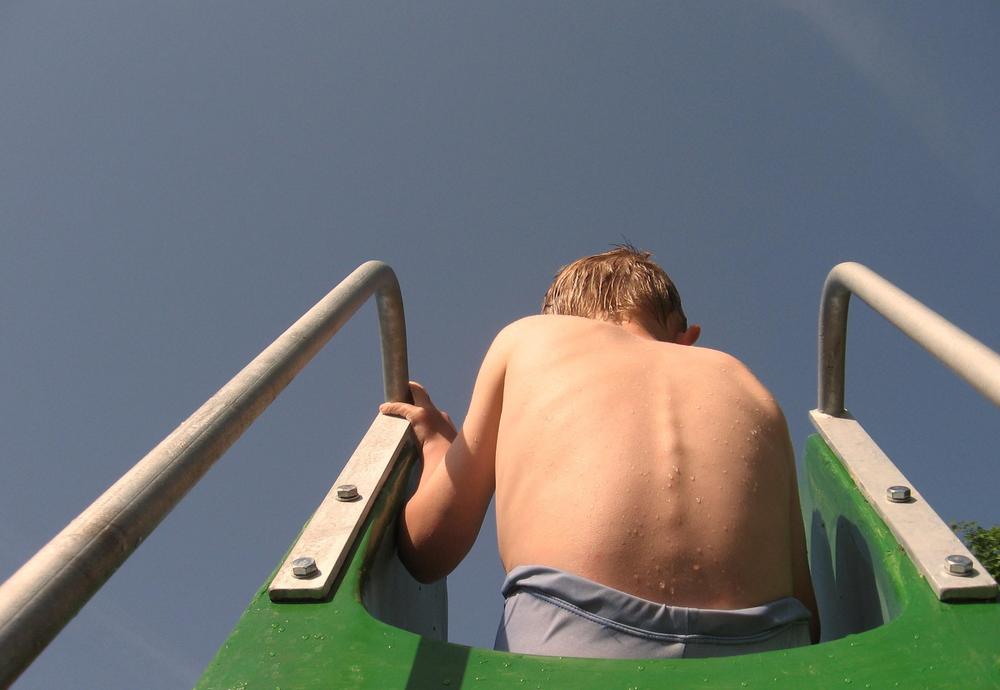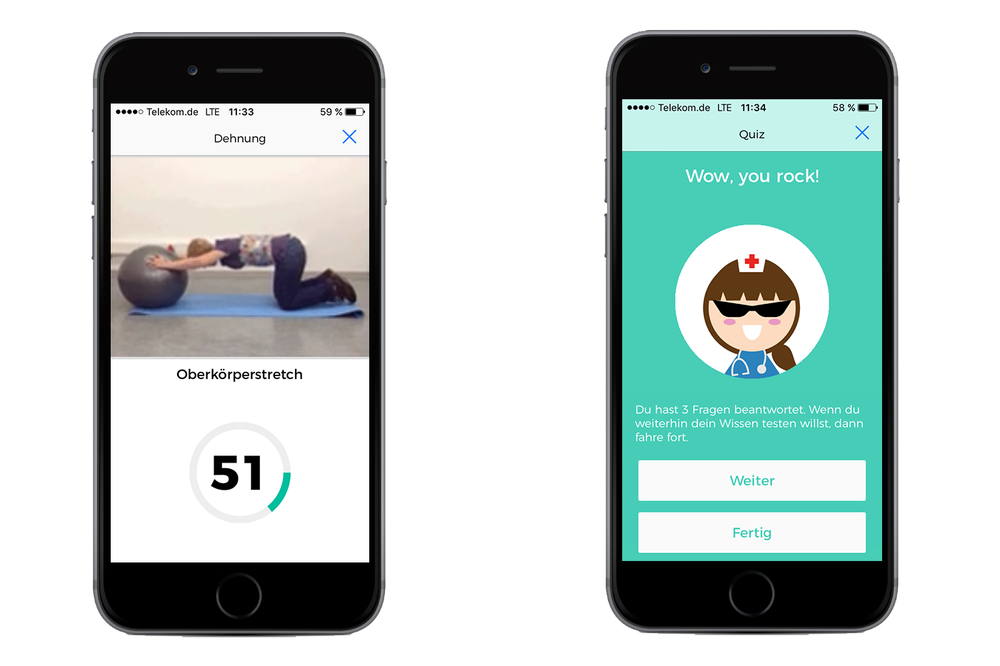App Helps Patients Manage Back Pain
At the BeMobil innovation cluster, Berlin universities are joining forces to develop a digital coach. The app will make wearing a corset more comfortable for people with scoliosis.
Jun 13, 2017
Swimming for a healthy back: Children and teens with scoliosis have to wear a corset even for sports.
Image Credit: chribier / www.photocase.de
Wearing a corset is bad enough for grown-ups, but it can be torture for children and teens. Research teams in Berlin are trying to make corset-based scoliosis therapy easier for young patients through the help of a digital coach. Using an app on their smartphones or tablets, patients can monitor their treatment themselves and set personal milestones and goals. As part of a subproject conducted by the regional innovation cluster BeMobil and funded by the German Federal Ministry of Education and Research (BMBF) with a budget of 15 million euros, researchers are investigating ways of using a digital motivational coach to aid children and teens who wear a corset to straighten their spines. The scoliosis therapy project takes a collaborative approach between Technische Universität Berlin, Humboldt-Universität zu Berlin, Universität der Künste, Sportmedizin der Universität Potsdam, and business enterprises Nova Motum Services & Consulting GmbH and Code Mercenaries Hard- und Software GmbH.
Support and Motivation
Scoliosis is the specialist term used to describe a bent or S-shaped spine, which in Germany is the most frequently treated orthopaedic complaint among children and teens, especially girls. Many children and teens are prescribed a corset that is designed to mechanically correct the scoliosis and twist in the spine. The chances of a cure are good, but only if a patient wears their corset for up to 23 hours a day during their growth phase.
“Wearing a corset while in puberty isn’t exactly easy for most children and teens,” says Susanne Dannehl, a psychological psychotherapist who works at the Department of Medical Technology at Technische Universität Berlin. “That’s why we want to support these young people and give them some incentive.”
For young patients, the problem is exacerbated because to prescribe the best form of treatment, doctors have to discuss the matter with patients’ health insurance providers. Which type of corset is most effective? How long will it have to be worn? “The problem is that we have no reliable comparison data,” says Professor Marc Kraft, head of the Department of Medical Technology at Technische Universität Berlin. “The doctors only see the children about once every six months, and parents can’t and don’t want to permanently monitor whether their children are wearing their corsets and for how long.” This makes it impossible to collect objective treatment-related data such as length of wear and amount of movement and exercise. “We aim to fill this dual support and data gap,” says Kraft. “A digital coach that registers the wearer’s behavior and provides them with an incentive to wear their corset gives both help and inspiration.”
Powerful Mini Monitoring Systems
With the digital coach, various sensors are integrated into the corset to record treatment-related activity data like movement, temperature, dampness, and pressure. “Our aim is to make these monitoring systems so small yet so powerful that they can easily be built into the corset with no additional effort or expense. Modern, wireless communications technology transmits the data to a specially developed app on the young corset-wearer’s smartphone,” explains Dannehl, who also has a doctorate in psychology.
Virtual support: Using an app, the young patients can monitor their treatment themselves and set personal milestones and goals.
Image Credit: Screenshot: Digital Coach App
The question of how to design both the app and the corset to ensure patients will actually use them is being tackled by Professor Jörg Niewöhner from the Institute for European Ethnology at Humboldt-Universität with the support of his research assistant and fellow ethnologist Martina Klauser. “Working with all the project partners, from orthoses manufacturers, to scientists, to the young patients, and their parents, we’re conducting what you could describe as research into everyday life. We observe and analyze the differing circumstances and conditions, and often act as interpreters between the various groups. After all, the engineer who designs the sophisticated sensors doesn’t know much about a 14-year-old patient’s needs.”
Patients’ Needs Come First
“As we’re neither therapists nor technicians, we register a lot of implicit or non-expressed information,” says Martina Klausner. This includes communication concerning the length of time a corset is worn. The teenagers divided their day up according to what they were doing: school, leisure time, sleeping. In their free time, they “just took the corset off” for a while. “In a prototype version,” Klausner continues, “the app only shows the total number of hours that the corset is worn. When patients first tested the digital coach, we learned that they would like to see the actual times. They want to see from when to when they wore their corset, and also when they left it off. This information is important because it helps us to better understand the kind of problems that actually occur.” The situation is similar concerning treatment goals. “Our research has shown how important it is for young people to be able to set their own goals and milestones, and not feel pressured to follow a prescribed schedule.”
All the input received was and is still being used to develop the app. The researchers at Technische Universität Berlin, Humboldt-Universität, and Universität der Künste have also conducted a series of workshops with young scoliosis sufferers. As a result, the initial version of the app also contains a reward system: for every hour they wear their corset, the youngsters can collect points – cat lovers, for example, can receive pictures of cats.


